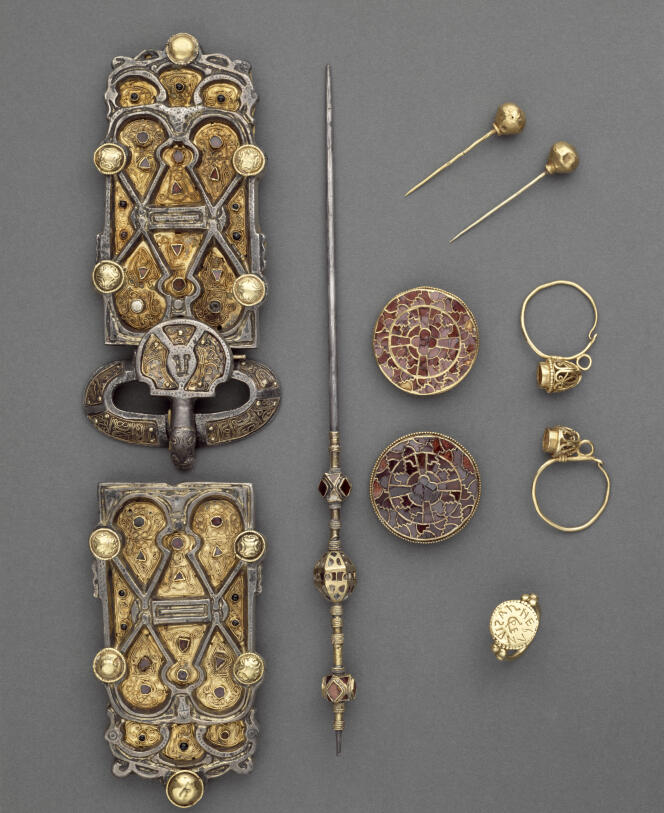


What do you know about the Franks and the Merovingian kings? Anyone schooled in France would be familiar with a few names, like Clovis, Clotilde and Dagobert, and a few stories, such as Clovis' baptism in Reims on Christmas Day, the Soissons vase, the murderous rivalry between queens Frédégonde and Brunehaut, lazy kings wallowing in ox-drawn carts. Some people might know about the territory being regularly sliced up according to royal succession, or think about the High Middle Ages as being a dark period forged by barbarians. Others might remember the Vichy regime's opportunist claim that, after all, the Franks were basically a Germanic people like the Germans. Lots of negative clichés, then.
However, when archaeologist Michel Fleury discovered a sarcophagus containing the remains of a woman and her funerary furnishings in the basement of the Basilica of Saint-Denis in 1959, a sophisticated society, open to the world, was revealed.
First of all, there was a gold ring on which, around a monogram meaning "queen," the name "ARNEGUNDIS" can be read in capital letters. After 14 centuries of oblivion, Aregund, wife of Chlothar I – son of Clovis, the first king of the Franks – and mother of Chilperic, who inherited the kingdom of Soissons, has just resurfaced.
"We don't know much about her," admitted Fanny Hamonic, the curator in charge of early medieval collections at the National Archeology Museum in Saint-Germain-en-Laye, in the western suburbs of Paris. "We only have a few lines in the accounts of Gregory of Tours. But even if Aregund wasn't a major political figure, she was still buried at Saint-Denis. It's not quite the necropolis of the Merovingian kings, but it's where the high aristocracy was buried."
Aregund died around 580 CE at the age of 60 (according to her bone analysis), and was buried with what are presumed to be her favorite ornaments, which showed traces of wear. Textile fragments have also enabled us to reconstruct the way her remains were dressed. We can imagine the queen wearing a purple silk cloak, fastened by an exceptional belt, the silver trim of which is sumptuously worked. She also wore a veil studded with gold pins (one large one adorned with garnets), a red tunic, stockings held up by intricate garters including large animal-decorated ferrets, and heels. In the jewelry category, we note two gold-partitioned fibulae, decorated with garnets, and a pair of earrings.
Analysis of the various garnets showed that these gemstones came from India, Portugal and Bohemia. Byzantine elements were identified in the large pin, and the silk came from the Orient. "The Frankish world," Hamonic explained, "was not at all inward-looking. Nor were they brutes who beat each other up all day long. On the contrary, it was a society where production was highly refined."
